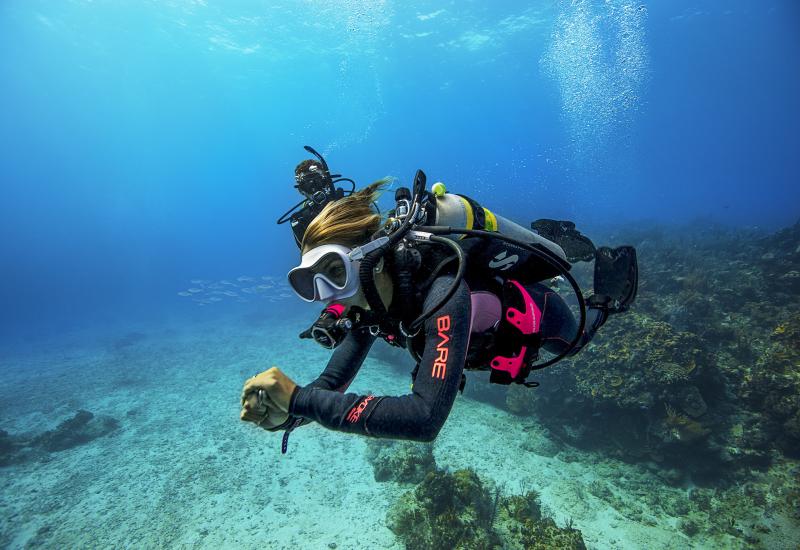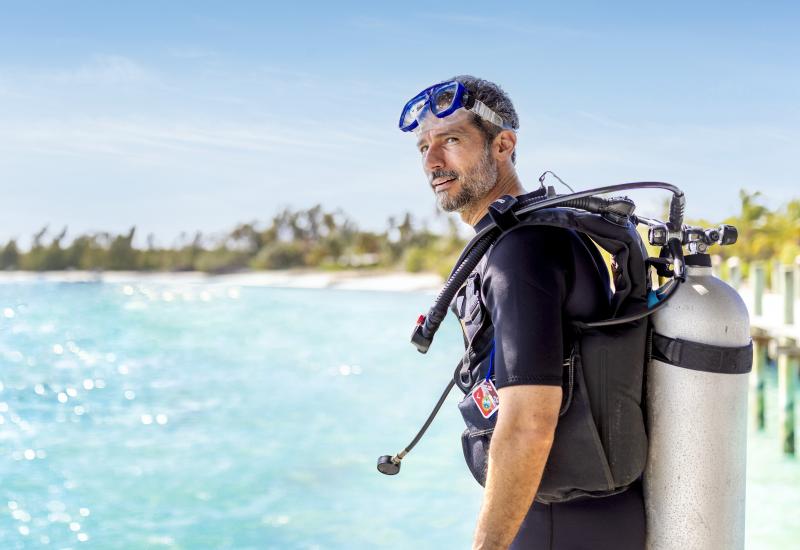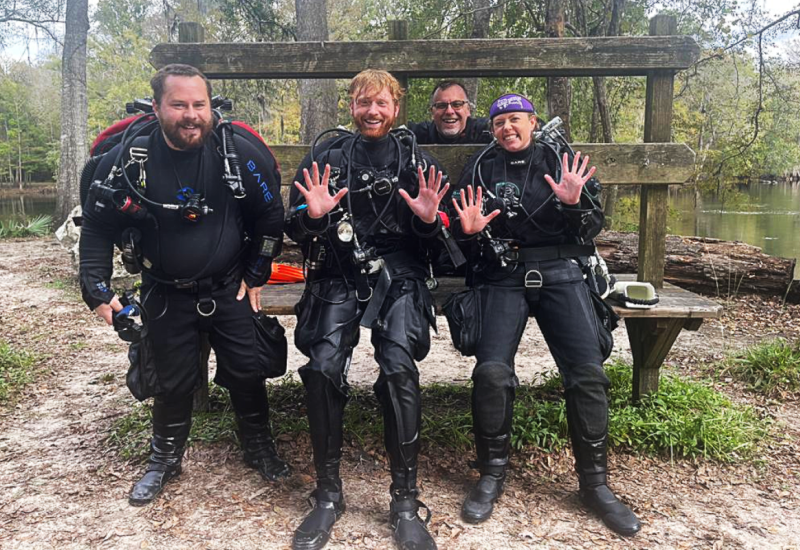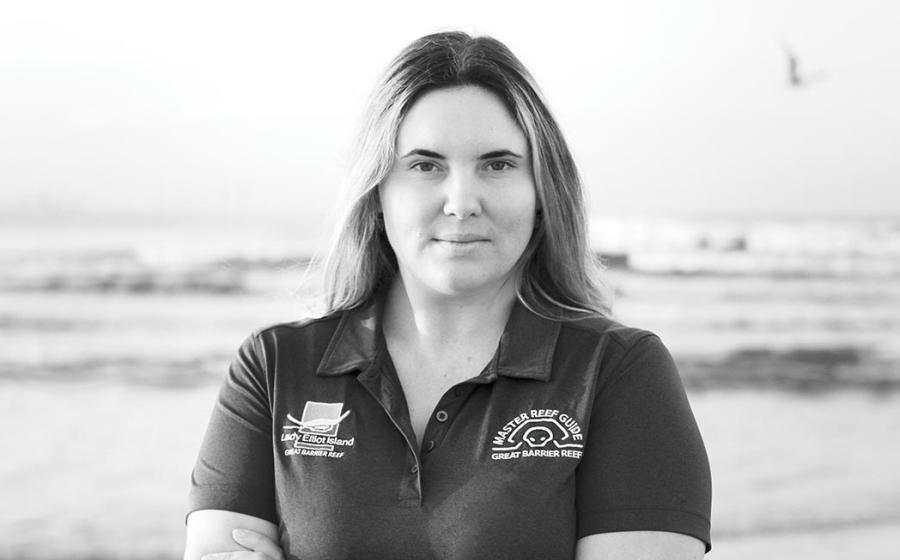Should You Go Solo?
Raise your hand if this has ever happened to you: You're on the dive boat, solo for whatever reason, and the divemaster pairs you up with a complete stranger who is newly certified. "You have to dive with a buddy," he insists, checking your names off on the clipboard and heading off to rig weight belts. "Besides, it's safer."
"OK, how bad can this be," you think, resolving to make the most of the situation. "I'll share my love of the sport with a new diver and it'll be a good experience for both of us. Right?" Then you glance over at your new buddy, who begins to put his gear on the tank upside down ... and backwards.
Reasons to Go Solo
The mandatory buddy system has been a part of diving from the earliest days of certification, but there's a logical flaw in this absolute rule--the assumption that both divers are well-matched and equally capable of helping each other. Unfortunately, this is rarely the case with a randomly assigned buddy.
When there is a mismatch, the experienced diver is unfairly saddled with supervising a less experienced diver. That's great for the beginner, but can the newbie reasonably assist the experienced diver in an emergency? Probably not. And if the experienced diver takes the buddy concept seriously, he can pretty much forget about any recreation on the dive. He'll be too busy serving as a substitute instructor to his buddy.
Increased safety and the freedom to actually enjoy the dive are two reasons experienced open water divers often seek solo diving certification. Though the concept is still controversial, experience has shown that properly trained and equipped solo divers are every bit as safe--if not safer--than divers unwillingly yoked together by an arcane rule.
Let's be clear: Solo diving doesn't mean abandoning your buddy at the first opportunity, nor does it mean "same ocean" buddy diving. Properly practiced, solo diving is a disciplined form of scuba rooted in careful planning and self-sufficiency. It requires more than antisocial tendencies. It requires the proper gear, training and attitude.
The Gear
Even the worst buddy serves at least one useful purpose: He carries an independent air supply and regulator you can use in case of emergency. As a solo diver, you'll need to carry your own air reserve, complete with redundant regulator.
The size of your "buddy in a bottle" will vary depending on depth and conditions. Compact and self-contained Spare Air systems are great for very shallow dives, but any dives you make deeper than 60 feet require an 18- to 30-cubic-foot pony bottle, with its own regulator and pressure gauge.
The nature of solo diving also demands that you carry a marker buoy or safety sausage, and a sonic alert device in case of surface emergencies. A dive knife is also a good idea in case you run into entanglements.
As a solo diver, you'll also need to make sure that all of your gear (regulators, BC, lights, etc.) is in top working order. Remember: You and you alone will have to deal with any problems that crop up under water.
The Training
When you begin solo diving certification, be ready to be humbled. The class starts with a rigorous skills check in which you'll have to demonstrate proficiency and comfort performing basic water skills including mask removal, regulator recovery, emergency ascents and superior buoyancy control.
If you pass the skills test (you might not; ask about refund policies in advance), you'll learn a new set of dive planning skills including how to estimate air consumption for a dive and how to rig an appropriate bailout system. Then you'll practice using the bailout until it becomes a reflexive reaction.
After that, you'll go on two of the toughest dives of your life. You'll have to complete detailed dive plans and run advanced navigation patterns--all while dealing effectively with a number of emergency scenarios visited upon you by your instructor. These simulated emergencies will start without any advance warning. You'll be expected to respond calmly and proficiently, without assistance. Finally, you will have to demonstrate the ability to swim 200 meters on the surface in full equipment, and at a reasonable pace.
The Attitude
To enroll in a solo certification class, you must be at least 21, have 100 or more properly logged dives and hold an advanced open water certification.
But just as important is the right attitude. The freedom of solo diving comes with responsibility--to assess the risks, to stay within your limits, and to take complete responsibility for your safety.
The End of Buddy Diving?
Will solo diving replace buddy diving? Of course not. In most situations and for most recreational divers, the buddy system makes sense--so long as both divers understand the buddy team concept is designed to combine their strengths, not compensate for their weaknesses.
Early dive training programs adopted the idea of a mandatory buddy system from swim training programs of the day. It made a lot of sense at the time, given that early scuba gear was far less reliable than it is today. However, divers were still trained to be self-sufficient in courses that were much more intense than today's typical certification class. Unfortunately, as equipment and training have evolved, the buddy system has become a crutch for many divers, rather than the safety net it was designed to be.
Solo diving is just another option for the advanced recreational diver. It's scarcely different from any other form of technical or specialty dive training in that it allows experienced divers the freedom and pleasure of exploring the sport to the fullest. Some divers who complete solo training never dive alone, but rather use the techniques and skills to be better buddies. Even more importantly, when these divers are accidentally separated from their buddies, solo training makes them less likely to become statistics in support of the buddy system.
For Card-Carrying Members of the Solo Diving Conspiracy
Q: Will my solo card be accepted by dive operators?
A: Maybe not. The buddy system is the status quo and many feel that it is the tried and proven system for safer diving.
A small, but growing number of operators recognize solo certification and allow solo dives with the appropriate equipment and the completion of a special solo diver release form. Some operators use their own form, but to be safe, you should bring your own standardized form.
SDI-certified solo divers can download a release form through the agency's web site. Print the form and carry it in your logbook, but wait to sign it. The operator will need to verify that your signature is real. Of course, it goes without saying that you should state your solo intentions when booking your dive trip to avoid confusion and disappointment upon arrival.
If your dive operator refuses to allow solo diving, you'll just have to grin and bear it--at least for now. Historically, recreational dive operators have been slow to embrace innovation. Nitrox, dive computers, BCs and SPGs were all first met with disapproval. Be a good sport, play by the rules of the buddy system and let your obvious competence speak for the virtues of self-sufficient diving. I predict that solo diving will soon gain wide acceptance. In fact, I'd bet my nitrox dive computer on it.
The Solo Debate
In the often heated debate over solo diving, both sides agree on one fact: The majority of dive accidents occur when buddies become separated.
Proponents of the buddy system use this fact to argue the simple logic that two divers are better able to handle problems than one. They also argue that diving is a social activity meant to be shared.
Proponents of solo diving, however, look at the statistics and ask a pointed question: If divers are more likely to be injured when they are inadvertently separated from their buddies, why not train them to be more self-sufficient? They also argue that divers should not be saddled with the responsibility for another diver's safety.
Who's right? That's for you to decide.
Raise your hand if this has ever happened to you: You're on the dive boat, solo for whatever reason, and the divemaster pairs you up with a complete stranger who is newly certified. "You have to dive with a buddy," he insists, checking your names off on the clipboard and heading off to rig weight belts. "Besides, it's safer."
"OK, how bad can this be," you think, resolving to make the most of the situation. "I'll share my love of the sport with a new diver and it'll be a good experience for both of us. Right?" Then you glance over at your new buddy, who begins to put his gear on the tank upside down ... and backwards.
Reasons to Go Solo
The mandatory buddy system has been a part of diving from the earliest days of certification, but there's a logical flaw in this absolute rule--the assumption that both divers are well-matched and equally capable of helping each other. Unfortunately, this is rarely the case with a randomly assigned buddy.
When there is a mismatch, the experienced diver is unfairly saddled with supervising a less experienced diver. That's great for the beginner, but can the newbie reasonably assist the experienced diver in an emergency? Probably not. And if the experienced diver takes the buddy concept seriously, he can pretty much forget about any recreation on the dive. He'll be too busy serving as a substitute instructor to his buddy.
Increased safety and the freedom to actually enjoy the dive are two reasons experienced open water divers often seek solo diving certification. Though the concept is still controversial, experience has shown that properly trained and equipped solo divers are every bit as safe--if not safer--than divers unwillingly yoked together by an arcane rule.
Let's be clear: Solo diving doesn't mean abandoning your buddy at the first opportunity, nor does it mean "same ocean" buddy diving. Properly practiced, solo diving is a disciplined form of scuba rooted in careful planning and self-sufficiency. It requires more than antisocial tendencies. It requires the proper gear, training and attitude.
The Gear
Even the worst buddy serves at least one useful purpose: He carries an independent air supply and regulator you can use in case of emergency. As a solo diver, you'll need to carry your own air reserve, complete with redundant regulator.
The size of your "buddy in a bottle" will vary depending on depth and conditions. Compact and self-contained Spare Air systems are great for very shallow dives, but any dives you make deeper than 60 feet require an 18- to 30-cubic-foot pony bottle, with its own regulator and pressure gauge.
The nature of solo diving also demands that you carry a marker buoy or safety sausage, and a sonic alert device in case of surface emergencies. A dive knife is also a good idea in case you run into entanglements.
As a solo diver, you'll also need to make sure that all of your gear (regulators, BC, lights, etc.) is in top working order. Remember: You and you alone will have to deal with any problems that crop up under water.
The Training
When you begin solo diving certification, be ready to be humbled. The class starts with a rigorous skills check in which you'll have to demonstrate proficiency and comfort performing basic water skills including mask removal, regulator recovery, emergency ascents and superior buoyancy control.
If you pass the skills test (you might not; ask about refund policies in advance), you'll learn a new set of dive planning skills including how to estimate air consumption for a dive and how to rig an appropriate bailout system. Then you'll practice using the bailout until it becomes a reflexive reaction.
After that, you'll go on two of the toughest dives of your life. You'll have to complete detailed dive plans and run advanced navigation patterns--all while dealing effectively with a number of emergency scenarios visited upon you by your instructor. These simulated emergencies will start without any advance warning. You'll be expected to respond calmly and proficiently, without assistance. Finally, you will have to demonstrate the ability to swim 200 meters on the surface in full equipment, and at a reasonable pace.
The Attitude
To enroll in a solo certification class, you must be at least 21, have 100 or more properly logged dives and hold an advanced open water certification.
But just as important is the right attitude. The freedom of solo diving comes with responsibility--to assess the risks, to stay within your limits, and to take complete responsibility for your safety.
The End of Buddy Diving?
Will solo diving replace buddy diving? Of course not. In most situations and for most recreational divers, the buddy system makes sense--so long as both divers understand the buddy team concept is designed to combine their strengths, not compensate for their weaknesses.
Early dive training programs adopted the idea of a mandatory buddy system from swim training programs of the day. It made a lot of sense at the time, given that early scuba gear was far less reliable than it is today. However, divers were still trained to be self-sufficient in courses that were much more intense than today's typical certification class. Unfortunately, as equipment and training have evolved, the buddy system has become a crutch for many divers, rather than the safety net it was designed to be.
Solo diving is just another option for the advanced recreational diver. It's scarcely different from any other form of technical or specialty dive training in that it allows experienced divers the freedom and pleasure of exploring the sport to the fullest. Some divers who complete solo training never dive alone, but rather use the techniques and skills to be better buddies. Even more importantly, when these divers are accidentally separated from their buddies, solo training makes them less likely to become statistics in support of the buddy system.
For Card-Carrying Members of the Solo Diving Conspiracy
Q: Will my solo card be accepted by dive operators?
A: Maybe not. The buddy system is the status quo and many feel that it is the tried and proven system for safer diving.
A small, but growing number of operators recognize solo certification and allow solo dives with the appropriate equipment and the completion of a special solo diver release form. Some operators use their own form, but to be safe, you should bring your own standardized form.
SDI-certified solo divers can download a release form through the agency's web site. Print the form and carry it in your logbook, but wait to sign it. The operator will need to verify that your signature is real. Of course, it goes without saying that you should state your solo intentions when booking your dive trip to avoid confusion and disappointment upon arrival.
If your dive operator refuses to allow solo diving, you'll just have to grin and bear it--at least for now. Historically, recreational dive operators have been slow to embrace innovation. Nitrox, dive computers, BCs and SPGs were all first met with disapproval. Be a good sport, play by the rules of the buddy system and let your obvious competence speak for the virtues of self-sufficient diving. I predict that solo diving will soon gain wide acceptance. In fact, I'd bet my nitrox dive computer on it.
The Solo Debate
In the often heated debate over solo diving, both sides agree on one fact: The majority of dive accidents occur when buddies become separated.
Proponents of the buddy system use this fact to argue the simple logic that two divers are better able to handle problems than one. They also argue that diving is a social activity meant to be shared.
Proponents of solo diving, however, look at the statistics and ask a pointed question: If divers are more likely to be injured when they are inadvertently separated from their buddies, why not train them to be more self-sufficient? They also argue that divers should not be saddled with the responsibility for another diver's safety.
Who's right? That's for you to decide.










